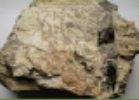Earth Sciences (Rocks and Volcanoes 1)
1/19
Earn XP
Description and Tags
Flashcards about Igneous Rocks and Volcanoes
Name | Mastery | Learn | Test | Matching | Spaced |
|---|
No study sessions yet.
20 Terms
Solidus Line
The boundary between the solid and partially liquid state of the mantle.
Decompression Melting
Decrease in pressure with no great change in temperature
Partial Melting
Caused by:
decompression melting
hot mantle plume melting
Fluid flux melting
Hot mantle plume melting
Increase in temperature
Fluid-flux melting
Addition of fluids (water-rich)
Crystallizing magma
Crystals (minerals) + melt (liquid) + gas bubbles (H2O, CO2, SO2)
Bowen’s Reaction Series
As magma cools, minerals crystallize in a systematic fashion.
Magma differentiation
The combination of cooling, crystallization, and melt composition change.
Assimilation
A magma may change composition by incorporating and melting the surrounding host rock
Magma Mixing
A magma may change composition when one magma intrudes into another magma with a different composition.
Batholiths
Very extensive plutons usually assembled over millions of years.
Dikes
Thin magmatic intrusions. Cross-cut existing geological layers. Kind of like veins
Sills
Thin magmatic intrusions. Parallel to existing geological layers. Kind of like veins
Igneous Rocks
form from very hot, liquid (molten) rock called magma
Rock texture
Overall appearance of the rock based on the size, shape, and arrangement of its interlocking crystals; result mainly from different cooling histories.
Rock composition
Composed of minerals – consequence of the chemical makeup of its parent magma.
Step 1 of mafic magma → felsic magma
Partial melting of ultramafic mantle rock generates basaltic
(mafic) magma
Step 2 of mafic magma → felsic magma
Basaltic (mafic) magma buoyantly rises through the lithosphere and ponds beneath less dense crystal rocks
Step 3 of mafic magma → felsic magma
Partial melting of continental crust generates magma with a
felsic-intermediate composition
Pegmatitic texture
Very large grains (<2.5cm). Very slow cooling, typically intrusive.
